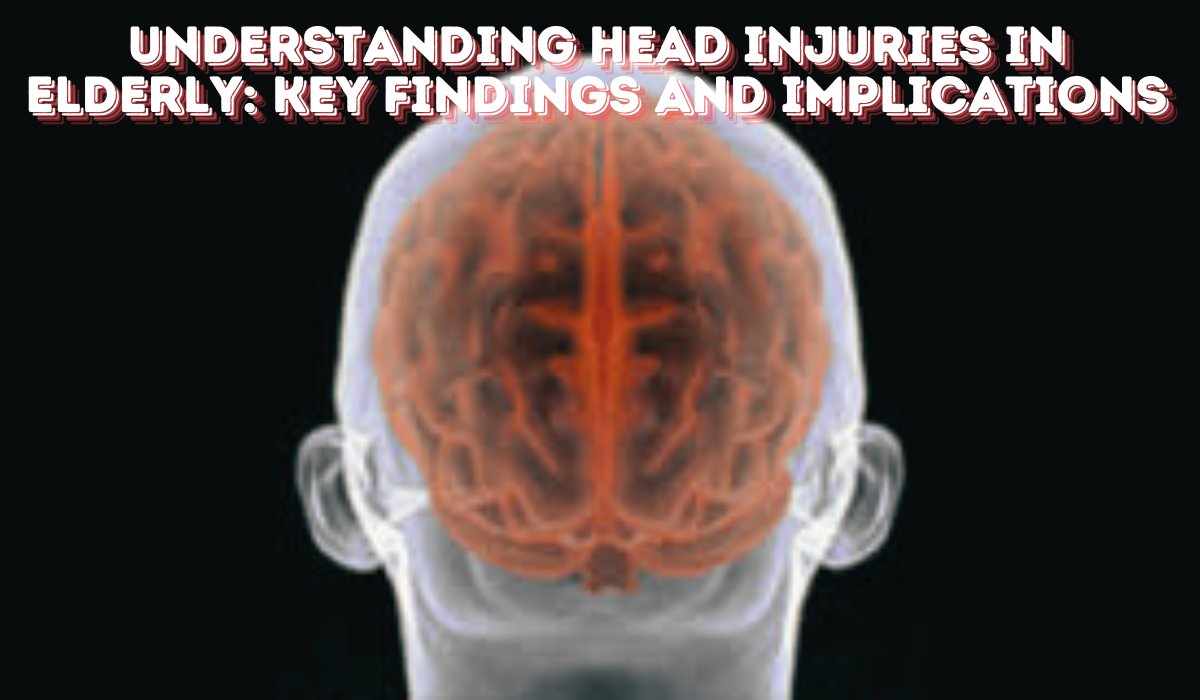Understanding Head Injuries in Elderly: Key Findings and Implications – 2024!

A recent study has shed light on the primary cause of head injuries among older adults in the United States, emphasizing critical considerations for emergency care and treatment protocols.
Prevalence of Falls Among Older Adults
- Common Cause of Injury: Falls are identified as the leading cause of injury in adults aged 65 and above.
- Statistics: Annually, over 14 million older adults (one in four) report experiencing a fall.
- Head Injury Association: Approximately 90% of head injuries in this demographic result from falls occurring at ground level.
Emergency Department Challenges and Assessment
- Risk Assessment: Evaluating head injuries in elderly patients necessitates careful examination due to the heightened risk of complications, such as intracranial hemorrhage (ICH).
- Anticoagulant Concerns: Elderly patients on anticoagulants face additional risks, including delayed ICH following head trauma.
- Diagnostic Approach: Current practice often involves hospital admission and repeat CT scans to monitor for ICH.
Insights from Recent Research
- Study Context: Researchers from Florida Atlantic University conducted a cohort study to reassess the incidence of delayed ICH in elderly ED patients on anticoagulants.
- Methodology: The study categorized patients into groups based on anticoagulant use: no anticoagulant, Warfarin, direct oral anticoagulants (e.g., dabigatran, rivaroxaban, apixaban), and Heparinoid (e.g., heparin, enoxaparin).
- Findings: Out of 3,425 patients studied, only 0.4% (13 patients) experienced delayed ICH, a significantly lower rate than previously reported.
- Implications: The study challenges the necessity of routine hospital admission and repeat CT scans for elderly patients on anticoagulants who present with head trauma.
Practical Recommendations
- Clinical Guidance: According to the study, elderly patients on Warfarin or other anticoagulants do not require routine hospitalization or repeat CT scans following head trauma unless clinically indicated.
- Impact on Guidelines: These findings are poised to influence future guidelines and practices concerning the management of head trauma in elderly patients on anticoagulants.
- Research Support: The study was conducted over a year at two hospitals, involving comprehensive follow-up methods to detect delayed ICH cases.
Conclusion
This study underscores the importance of evidence-based approaches in managing head trauma among elderly patients, particularly those on anticoagulants. By refining clinical practices, healthcare providers can optimize care delivery and improve outcomes for this vulnerable population.
Table of Contents
References:
- The Journal of Emergency Medicine – [Study on Incidence of Delayed ICH in Geriatric ED Patients]
- Florida Atlantic University’s Schmidt College of Medicine – [Research and Insights on Management of Elderly Patients with Head Trauma]



2 thoughts on “Understanding Head Injuries in Elderly: Key Findings and Implications – 2024!”